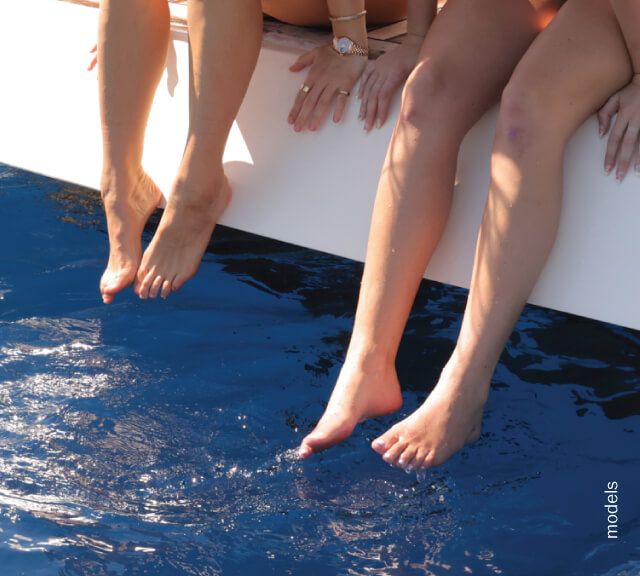

Athlete’s Foot Treatment
Athlete’s foot (or tinea pedis) is a skin infection in the foot caused by a fungus, usually occurring between the toes. The fungus most commonly attacks the feet because shoes create a warm, dark, and humid environment which encourages fungus growth. The fungus that causes athlete’s foot can be found on floors and in socks and clothing. The warmth and dampness of areas around swimming pools, showers, and locker rooms are also susceptible breeding grounds for fungi. (The term “athele’s foot” was coined because the infection was common among athletes who frequently used these facilities.)
Athlete’s foot may spread to the soles of the feet and to the toenails and can also be spread to other parts of the body, notably the groin and underarms, by those who scratch the infection and then touch themselves elsewhere. The fungus can be spread from person to person by contact with these objects. However, without proper growing conditions (a warm, moist environment), the fungus will not infect the skin.
What are the symptoms of athlete’s foot?
Athlete’s foot includes one or more of the following symptoms: itching and burning feet, dry skin, scaling, inflammation, and blisters. In more severe cases, the skin may crack and bleed. When the skin is injured by the fungus (such as with blisters or cracking), bacteria can also invade the skin. These bacteria can cause a bad odor and inflammation. This is especially likely to occur in the elderly, individuals with diabetes, chronic leg swelling, or who have had veins removed (such as for heart bypass surgery), and patients with impaired immune systems.
How can Athlete foot be treated?
Make sure the infected area is clean and dry, thus less suitable for the fungus to grow. Wear light and airy shoes that are leather or other breathable material. Shoe materials, such as vinyl, that don’t breathe cause your feet to remain moist, providing an excellent area for the fungus to breed. Likewise, absorbent socks that wick water away from your feet such as cotton socks will help. A quality medicated foot powder can help keep feet dry. Finally, your feet can be soaked in a drying solution of aluminum acetate (Burrow’s solution or Domeboro’s solution).
Antifungal creams can also be used to treat athlete’s foot. Many medications are available such as miconazole or clotrimazole. Ask your doctor for a recommendation. Treatment should be continued for up to four weeks.
If you notice any redness, increased swelling, bleeding, or if your infection is not clearing up, see your doctor. If a bacterial infection is also occurring, an antibiotic may be necessary.